LEARN TO CARE FOR YOUR OWN PETS
....or WORK IN THE PET INDUSTRY
- Self paced course, start any time
- Strong support from expert, highly qualified tutors out of both Australia and the UK
- Learn to take care of your own pets, or lay a foundation for working with dogs
- This course is also excellent professional development training for anyone working in the canine industries
Understand a wide range of dog's needs. Know how to provide effective care for those needs either as a dog owner or a professional working in the industry. Understand the different goods and services within the canine industry.
Course Contents
There are 9 lessons in this course:
- Introduction to Dog Care
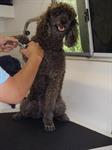
- What Dogs Need
- Food
- Water
- Physical and Psychological Environment
- Exercise
- Hygiene
- Importance of Routine
- Potential Problems and Owner Error
- Uncertainty of pack position
- Neglect
- Escape
- Attacking other people and animals
- Physical damage
- Illness
- Which Breed is best
- Choosing a puppy or adult dog
- Outside living or inside pet
- Restricting and confining a pet
- Dealing with holidays
- Training dogs
- Socialising with other animals
- Scope of Dog care industry
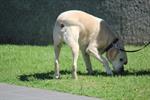 Canine Biology
Canine Biology
- Anatomy
- Mouth
- Teeth
- Ears
- Eyes
- Skeletal system
- Digestive system
- Normal physiological values
- Circulation
- Respiratory rates
- Thermoregulation
- Dog Health Part 1
- Introduction to nutrition and feeding
- Nutritional Components
- Carbohydrates
- Proteins
- Fats
- Minerals
- Vitamins
- Water
- Changing requirements through different life stages
- Growth period
- Working and high performance period
- Pregnancy and lactation period
- Geriatric period
- Feeding patterns -time controlled or free choice
- Feed products
- Commercial foods
- Medicinal/veterinary foods
- Home cooked Foods
- Snacks and treats
- Foods to avoid
- Common nutritional disorders
- Allergies
- Poisoning
- Preventative health
- Diet supplements
- Immunisation
- Worms, tick and flea prevention
- Exercise
- Dental care
- Skin and Nail Care
- Basic First Aid Equipment
- Assessing the Situation in an Emergency
- What to do... (in accidents or at specific times)
- Basic Resuscitation and CPR
 Dog Health Part 2 -Illnesses and Treatments
Dog Health Part 2 -Illnesses and Treatments
- Introduction
- Haemobartonellosis
- Babesiosis
- Von Willebrand’s Disease
- Aortic Stenosis
- Heart Failure
- Heart Murmurs and Arrhythmias
- Hypertension (High Blood Pressure)
- Heartworm
- Vomiting
- Diarrhoea
- Giardia
- Intestinal Worms
- Enteritis
- Inflammatory Bowel Disease (IBD)
- Diabetes Mellitus
- Cushing’s Disease (Hypoadrenocorticism)
- Hypothyroidism
- Postpartum Hypocalcaemia (Eclampsia)
- Conjunctivitis
- Glaucoma
- Cataracts
- Ear mites
- Deafness
- Anaphylactic Shock
- Lupus
- Hip Dysplasia
- Osteoarthritis
- Epilepsy
- Canine Degenerative Myelopathy (CDM)
- Canine Distemper
- Infectious Canine Tracheobronchitis (Kennel Cough)
- Asthma
- Mange
- Ringworm
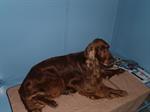 Dog Breeds
Dog Breeds
- Gundogs, Hounds, Pastoral, Terriers, Toy, Utility, Working
- English Setter
- Irish Setter
- German Pointer
- Golden Retriever
- Labrador Retriever
- Cocker Spaniel
- Hungarian Vizsla
- Beagle
- Dachshund
- Greyhound
- Irish Wolfhound
- Bassett Hound
- Bassett Hound
- Australian Cattle dog
- Border Collie
- German Shepherd
- Old English Sheep Dog
- Corgi
- Staffordshire Bull Terrier
- West Highland Terrier
- Parson (Jack) Russell Terrier
- Australian terrier
- Scottish terrier
- Chihuahua
- Bichon Frisé
- Cavalier King Charles Spaniel
- Pomeranian
- Pug
- Dalmatian
- Poodle
- Schnauzer
- Shih Tzu
- Alaskan Malamute
- Great Dane
- Mastiff
- Newfoundland
- St Bernard
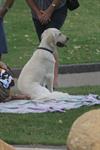 Breeding
Breeding
- Introduction
- Female Reproductive System
- Male Reproductive System
- Sexual Behaviour
- Mating Interaction
- The Management of Reproduction
- Desexing/Neutering/Spaying/Castrating
- Pregnancy and birth
- Parturition (Labour)
- Suckling
- Weaning
- Factors Influencing Puppy Size
- Puppy Development
- The breeding industry
- ‘Back-yard’ Breeders & Breeding for fun
- Illegal Commercial Puppy Breeding Enterprises (Puppy Mills)
- Breeding for Profit
- Legislation and Licensing
- Dog Behaviour and Training
- Understanding dog behaviour
- The Importance of Training
- Practical training techniques
- Technique for Recall
- Technique for Sit (in front)
- Technique for Sit (at the side)
- Technique for Stand (Beside)
- Technique for Stand (Beside)
- Technique for Leave
- Technique for Down/Lay
- Technique for Stay (beside)
- Technique for Heeling
- Behaviour Problems Present Opportunities for Business
- Attributes of Successful Dog Trainers
- Practical for Business Start-up
- Grooming
- The Importance of Grooming
- Grooming tools and equipment
- What to groom, why and how
- Skin
- Bathing
- Coat (hair)
- Brushing:
- Claws (nails)
- Teeth
- Teeth brushing
- Ears
- Professional grooming
- Long haired dog breeds
- Short hair breeds
- Other breeds
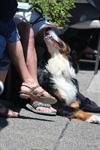 Styles and clips
Styles and clips
- Other Dog Services
- Health and related services
- Training and related services
- Day care and long term stay services
- Assistance dog services
- Professional dog handling
- Retail related services
Course Duration: 100 hours
Course Aims
- Determine the typical daily needs of a dog, both physical and psychological. Discuss the nature and scope of services available to dog owners.
- Describe the internal and external anatomy of a dog. Explain the standard physiology of a dog.
- Identify common health issues that impact on a dog’s health, wellbeing and longevity. Determine appropriate measures to prevent problems arising or respond to problems in the first instance when they do arise.
- Describe common ailments and optional treatments for those ailments.
- Compare differentiating characteristics across breeds of dogs, including both desirable and undesirable characteristics.
- Describe how dogs are bred and how the purity of breeds is controlled. Discuss the dog breeding industry and how to operate a dog breeding business.
- Explain ways in which dogs can be trained. Discuss how to successfully operate a dog training or behavioural consultancy business.
- Explain how to groom a dog.
- Determine how to successfully operate a dog grooming business.
- Explain the scope and nature of a wide range of products and services involved in the dog industry.
- Determine how to successfully operate a range of different dog service businesses.
WHY DO YOU NEED TO LEARN ABOUT DOG CARE?
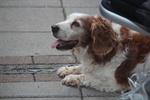 There can be many reasons. Things can go wrong, and life can become difficult for dog owners, in many ways; if they do not know how to properly care for their animals.
There can be many reasons. Things can go wrong, and life can become difficult for dog owners, in many ways; if they do not know how to properly care for their animals.
Potential Problems
Uncertainty of Pack Position
It is not cruel to direct or dominate a dog. As we have known for a long time, dogs have a natural instinct towards a pack mentality. Within the wild pack there is a hierarchical order of dominant males down to subordinate dogs (both male and female). It is important to understand this principle fully for effective dog ownership.
Neglect
Withholding necessary water, food, shelter or veterinary treatment are all examples of basic neglect. Unfortunately, a dog owner may neglect their pet due to lack of experience and education, and in some horrific cases dogs are maliciously neglected.
Neglect often leads to physical or psychological problems. Submissive urinating, hand shyness, depression, aggression, separation anxiety and OCD like behaviours may all occur in response to neglect. Depending on how old the dog is and how long the neglect has been happening for, it can take a long time to work through these issues and for the dog to regain its confidence.
Escape
Dogs may escape from their ‘back yard’ for a variety of reasons. They are naturally inquisitive animals and if their enclosure is not properly secure, they will venture off ‘down the block’ to investigate. Ensuring that the dog’s back yard is properly secure is essential to keep the dog safe and healthy.
Entire dogs and bitches are more likely to try and escape to roam around and find a mate. Neutering and spaying dogs can help to reduce this problem from occurring.
Boredom and lack of exercise are probably the biggest reasons that dogs try and actively escape. Increase daily exercise time and try to split exercise periods into shorter sessions that occur more often. Make sure the dog has toys to play with and plenty of human interaction to stimulate its mind.
Unfortunately, constant escaping may be a sign of a psychological problem. A dog who suffers from separation anxiety may actively try to escape to follow its owner when it leaves the house. Phobias and panic disorders may also cause a dog to continually escape. These types of conditions may stem from a traumatic or unpleasant experience that the dog associates with their ‘back yard’. Patience, re-training and lots of love and attention are required to overcome this type of problem.
Attacking People or Other Animals
There are a number of different reasons why a dog might attack a human or another animal. The dog may attack when it feels that it has to protect its own territory or its owner. Normally a dog would bark to do this, but some dogs may take things a step further and chase or physically attack the ‘intruder’. This reaction is more likely to happen with breeds that have been actively produced as guard dogs. If a dog feels threatened in a situation then again, it may attack in self-defence. Lack of proper socialisation may also cause the dog to attack. If they have not been properly socialised with humans and other dogs then they may be more likely to attack. Unfortunately there are some irresponsible dog owners that actively encourage and train their pets to attack humans and other dogs; in this instance the dog does not know any better and cannot be blamed for its actions.
In the main, dog attacks on people are generally unwittingly initiated by the human rather the dog. They may have inadvertently invaded the dogs territory or come between the dog and its food. They may have shown the dog some threatening or aggressive body language and the dog attacks to protect itself.
Any dog, no matter what breed, has the ability to attack humans and other animals. It is important for every dog owner to ensure the dog is well socialised with humans, other dogs and other animals and is kept under proper control when out and about in public.
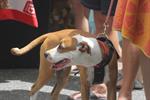 Physical Damage
Physical Damage
It is natural behaviour for a dog to chew things, to dig holes in the garden and to be protective over their own territory. Sometimes, a dog can cause physical damage to objects that we don’t want them to e.g. shoes, furniture, carpets, doors and windows. This destructive behaviour can be caused by a number of different reasons. The dog may simply be bored and not receiving enough exercise, which causes it to destroy things. If the destructive behaviour occurs when the dog is left on his own in the house it may be due to a separation anxiety problem.
If the behaviour tends to occur when the owner is present, then the dog may be doing it to gain attention.
If the dog repeatedly causes physical damage to doors, windows and window sills then the problem may be caused by the dog’s territorial instincts; the dog may be causing the damage to prevent other animals and humans from entering its territory. Depending on the root cause of the problem the dog may need more attention and mental stimulation, more toys to play with when left alone, more exercise or more direct supervision from the owner.
Illness
It is important that a pet dog is fed appropriately, is given the opportunity for adequate exercise and receives love and attention in its home environment. This will help to keep the dog physically and mentally healthy. There are a number of routine health care tasks that an owner should carry out to help prevent illness and disease in their pet. Dogs should be regularly de-wormed with an appropriate anthelmintic to reduce and prevent parasitic infection. They should also be routinely vaccinated against the most common canine diseases. It is common for the vet who administers routine vaccinations to carry out an annual health check at the same time. Attention to the dogs teeth and gums is also important. Regular brushing and the addition of bones or treats specifically designed to help clean